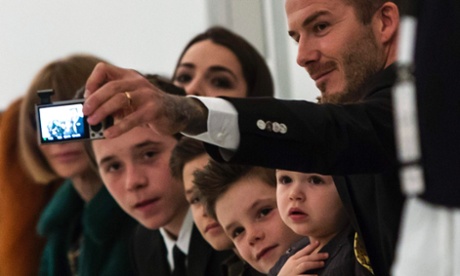
Selfies are so 2013. I mean that literally: ‘selfie’ was chosen as the single word that defined the entire year. There were selfies in space. There were spinoff ‘lelfie’ trends. And selfies sparked a ‘global phenomenon’, which is a term journalists use to describe a subgroup of people doing something on the internet. (Remember planking?) This so-called phenomenon is likely to still remain a phenomenon in 2014. Thanks, Obama.
But what does ‘phenomenon’ mean in this case, when people have been taking selfies in one form or another for hundreds of years? A computer science professor and his team at the City University of New York wanted to see if selfies actually lived up to the hype, and see if this particular form of self expression is as big a part of the social web as it seems. For one week in December – the same week as Obama’s infamous Nelson Mandela memorial selfie – Lev Manovich and his team used a social data tool called Gnip to collect and then analyse 656,000 photos from the central parts of five cities around the world: New York City, Bangkok, Moscow, Sao Paolo and Berlin.
Facial recognition software helped the team isolate individual selfies, and using using Instagram’s API, researchers created Selfiexploratory, an interactive project that displays several data points Monvich’s team analyzed: age, sex and the degree of a selfie snapper’s head tilt, among them. The results show that selfie aficionados in Bangkok skew younger than those in, say, Berlin. People in Moscow smile far less than their happier, more expressive counterparts in Sao Paulo. And, in all cities analyzed, selfie-takers are overwhelmingly female, though Manovich notes the balance is more equal in the US in general. But perhaps most importantly, the team found that only 3 to 5% of each of those city’s total images were selfies.
The data’s not perfect. There was no way to really distinguish between tourist at Grand Central station and a Manhattan resident, for example: “We can use some of Instagram data to guess this – but there is no way to know this exactly in many cases,” Manovich wrote in an email. But no matter where the photo is taken, the data that selfies actually may not be as much of our collective digital culture as we realize and internet users aren’t as narcissistic as we might like to believe. Or at least they weren’t that week in December.
And now, some anecdotal observations: New York lives up to its melting pot reputation as it appears to be home to the the most racially diverse crowd of selfie-ers. The world could stand to use many more beard selfies. And awesome eyewear is perhaps the real global phenomenon here. See for yourself. Here’s a video sampling of the photos from around the world:
More info on the project is here.
What do you think about the study’s results?
If you comment below the line, please note which country you reside in and tell us how you selfie (eg, “I take selfies when I’m traveling” – United States)

